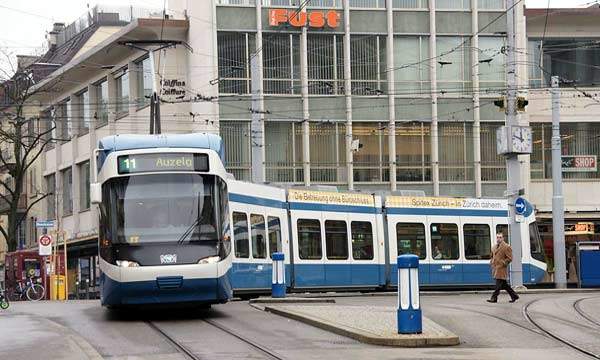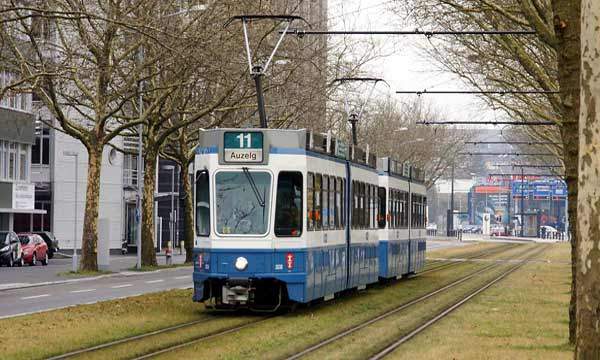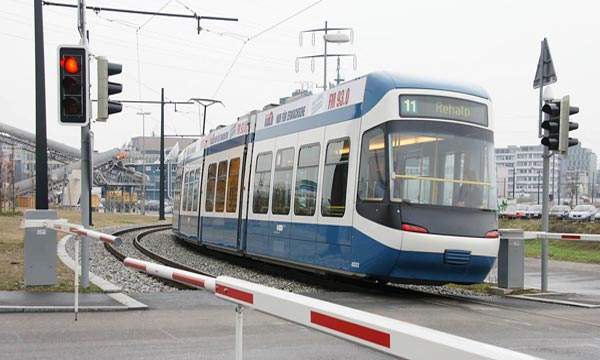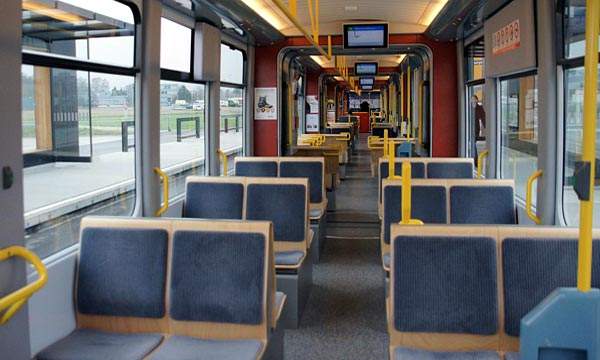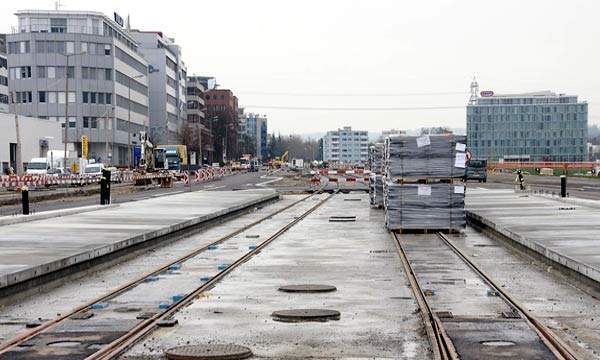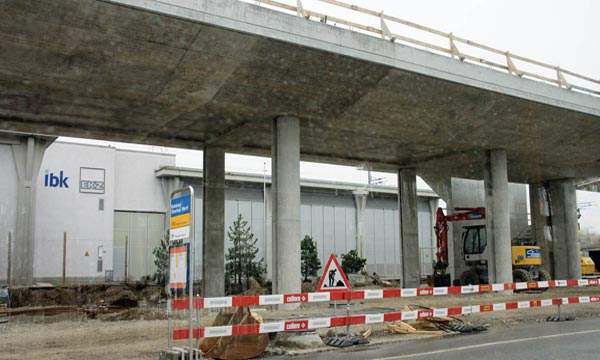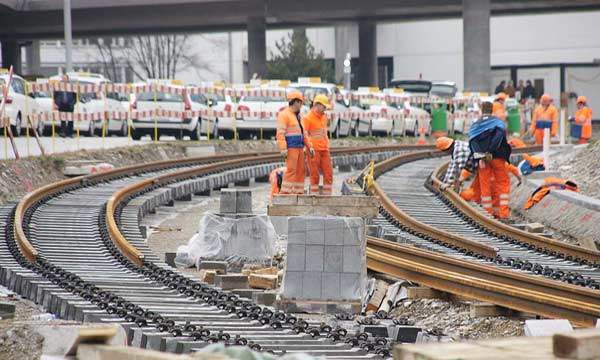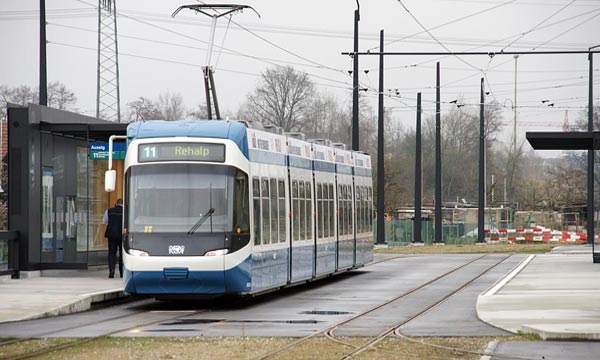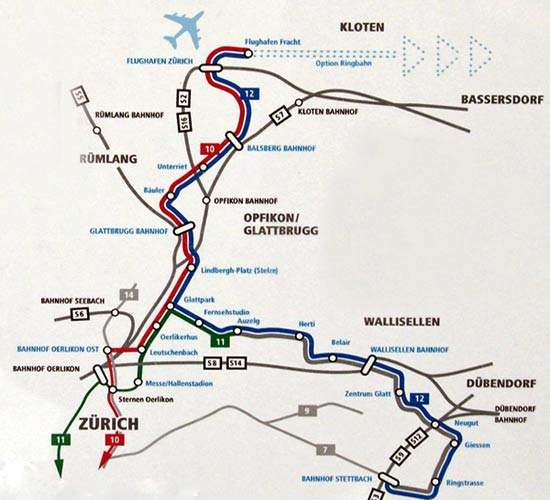The urban Glatt valley district (Glattal) adjoins the northern edge of Zurich, Switzerland’s largest city. Even in the context of Zurich’s expansion of population and job creation, the middle Glattal is undergoing intensive development, as exemplified by the greenfield development of Glattpark, Opfikon.
Planning restrictions apply in Switzerland to commercial and residential developments in respect of the availability and capacity of nearby public transport. The middle Glattal also falls between Zurich’s airport, a major employment centre, at Kloten and the city.
The project
Local transport authority Verkehrsbetriebe Glattal (VBG) is building a light rail system in association with the Zurich local transport authority (VBZ) and the tariff union of Zurich canton, ZVV. February 2003 saw the people of Zurich canton vote by two to one in favour of allocating CHF555m to the project.
As the region became increasingly built up, the Glattalbahn (also ‘Stadtbahn Glattal’) was judged to be the most effective solution for reducing congestion and creating more orbitally based journey opportunities that would avoid Zurich city centre. It would also be fully compatible with the existing Zurich tram system.
Passenger forecasts estimated that between 3,000 and 5,000 people per hour would be able to use the system, with an initial service frequency of a tram every 7.5min, stepping up to every 3-4min when fully operational.
The initial project has three phases. Operating as an extension of VBZ route 11, the first phase used a connection with the VBZ tram system at Oerlikon Bahnhof, a busy S-Bahn station. Running from a former terminus, Messe/Hallenstadion, through the modern Thurgauerstrasse business district and past the Glattpark development to Auzelg, the line opened in December 2006.
Phase two extends from a triangular junction with phase one near the Glattpark stop to Zurich Airport (terminus Fracht, the airfreight terminal), as an extension of Line 10. It was opened in December 2008.
Construction of phase three started in 2008, and became in December 2010. It is an extension to VBZ route 12. Service numbers and routes were modified as the system is commissioned, with the airport having two routes, 10 and 12, onwards to Zurich.
Although the airport has excellent long-distance and S-Bahn services at its sub-surface station beneath the main terminal building, this is not always useful for more local travel, especially relevant for the workforce. Phase three extends from the current Auzelg terminus (which remains so for Line 11) to Bahnhof Stettbach, a VBZ tram terminus and also on the S-Bahn.
Infrastructure
Following conception of the light rail option for the area in the early 1990s, construction began in 2004. The 12.7km (7.9-mile) system resulting from phases one to three is a mixture of street running and reserved way. Major works included the tunnel near Bahnhof Glattbrugg, bridges over railways and roads, also the viaduct to raise the line above roads south from the airport.
As per the Zurich network, turning circles were installed for use by single-ended vehicles. A total of 21 stations have been built, many of which are interchanges with Zurich S-Bahn stations and bus or tram routes of VBG and VBZ.
Phase one has five stations while phases two and three have eight stations each.
Landscaping work includes grassed track as on Thurgauerstrasse and tree plantings, with easy access for pedestrians and cyclists.
Rolling stock
The first phase in use for VBZ Line 11 has used Tram 2000 and Cobra classes. Although early design studies for the project implied a new form of streamlined vehicles would work Glattalbahn services, the 100% low-floor Cobra, a joint product of lead contractor Bombardier and Alstom, has become the system’s rolling stock.
Signalling and communications
The Glattalbahn follows standard light rail practice of ‘line of sight’ signalling with trams able to run at short headways and mix with existing road traffic and junctions. The stops have a consistency of design, providing shelter, ticketing machines and electronic real-time service displays. As with other modes throughout the canton, Glattalbahn services are a constituent part of the ZVV’s common ticketing system.
The future
Subject to approval is the longer-term plan for the Ringbahn Hardwald to the north and east which would complete a circuit for the Glattalbahn.

